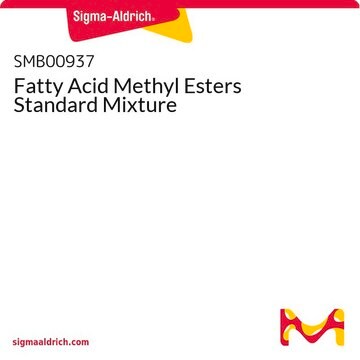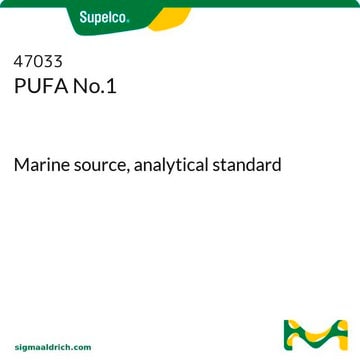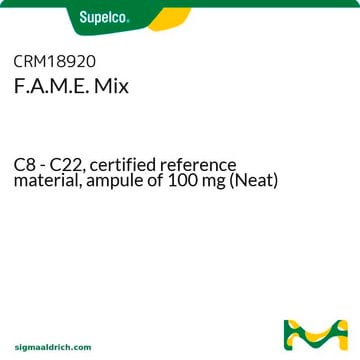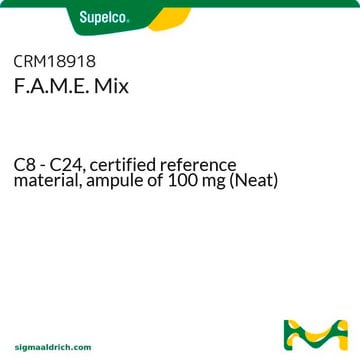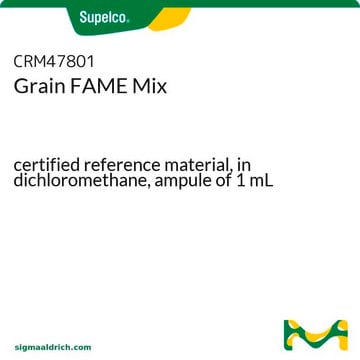47080-U
Bacterial Acid Methyl Ester (BAME) Mix
solution (10 mg/mL total concentration in methyl caproate), analytical standard
About This Item
Recommended Products
grade
analytical standard
form
solution (10 mg/mL total concentration in methyl caproate)
CofA
current certificate can be downloaded
packaging
ampule of 1 mL
technique(s)
HPLC: suitable
gas chromatography (GC): suitable
application(s)
food and beverages
format
multi-component solution
storage temp.
-10 to -25°C
Related Categories
General description
Check out our complete portfolio of Fatty acid methyl ester (FAME) reference material solution mixes
Application
- Development of a method to identify bacteria based on the gas chromatographic-vacuum ultraviolet spectroscopic (GC-VUV) analysis of bacterial fatty acid methyl esters (FAMEs)
- Fatty acid methyl ester (FAME) profiling of biodiesel obtained from microbial oil after its transesterification by gas chromatography-mass spectrometry (GC-MS)
- GC-FID method-based separation and determination of fatty acid methyl esters (FAMEs) in the lipid extracts of leptocephalus larva of eels
Other Notes
Analyte
Application
Related product
signalword
Warning
hcodes
Hazard Classifications
Flam. Liq. 3
Storage Class
3 - Flammable liquids
wgk_germany
WGK 3
flash_point_f
109.4 °F - closed cup
flash_point_c
43 °C - closed cup
ppe
Eyeshields, Faceshields, Gloves, type ABEK (EN14387) respirator filter
Choose from one of the most recent versions:
Already Own This Product?
Find documentation for the products that you have recently purchased in the Document Library.
Customers Also Viewed
Protocols
Protocol for GC Analysis of Bacterial Acid Methyl Esters (BAMEs) on Equity®-1
Chromatograms
suitable for GCsuitable for GCOur team of scientists has experience in all areas of research including Life Science, Material Science, Chemical Synthesis, Chromatography, Analytical and many others.
Contact Technical Service


